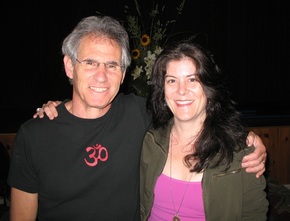An Extreme Challenge

An inner resource can be a buffer from the storm.
I am astonished by how surreal our world has become since Covid-19 arrived. We are suddenly faced with “social distancing,” fears of illness or contaminating others, closed schools, shuttered businesses, sometimes empty food shelves, and – for most of us – many new fears we did not have a few weeks ago. Some of you reading this may already be coping with illness or grief. My heart goes out to all who are suffering now. Whatever, your current experience, Covid-19 presents us with an unfamiliar and extreme challenge. This challenge calls us to tap into our inner resources–those parts of ourselves that ARE familiar and can be put to use in this situation.
What to Do: Find Your Inner Resource
Most of us have experience dealing with extreme situations, short or long term or we have traits that we can call on to handle these difficult times. Recognizing and activating those inner resources is important for our own mind health and the health of those around us.
One example for me was a momentarily extreme experience I had many years ago. I was leaving the Acme, normally a fairly predictable experience, and, as I approached my car in the parking lot, a woman in the car next to mine started running towards me screaming that I had dented her car. At that moment, I did not become defensive (i.e. That’s ridiculous! I could not possibly be so careless!) and I was able to muster an inner resource of curiosity and openness. I said to her, “Ok, let’s look” and I walked her over to my driver side, unlocked the car and showed her, as we looked together, that there was no match—my car door was too low to have done the damage. She relaxed, quietly apologized and I replied “It’s OK…” with sincere kindness, because I sensed that her extreme reaction was causing her suffering.
Staying Out of Internal Extremes
Feeling good about that experience made we want to replicate it whenever I could– and at appropriate and safe times. While I am NOT able to tap into my curious (and non-reactive) resource all of the time, I do practice it frequently. When I can do it, I feel like I am choosing. When I choose how I respond, I help myself stay out of extremes such as intense emotion, numbness, overwhelm, or feeling out of control. An important caveat is that tapping into an inner resources does not mean we judge or deny anxieties, grief, sadness, anger or other mind states that need attention and compassion. It does not mean an extreme reaction is never justified. It means knowing we have strengths at our disposal too.
There is much to do and process and many unknowns. For now, may all of us name, activate, and practice our most useful inner resources to manage this challenge and support each other as it unfolds.
The practice exercised below are designed to help.
Practice Exercises
As with any practice on your own, if anything distressing or disturbing arises, please stop.
Naming Your Inner Resources
- Make a list of all the inner resources you have to deal with an extreme situation. Or- what are some traits you have brought to other situations that can work here? These are traits or states of mind you feel good about. What words come to mind? i.e. Endurance, strength, intelligence, calm, creativity, help-seeking, practicality, playfulness, compartmentalizing, optimism, realism, focus, handiness, compassion, stubbornness, mindfulness, intrepidness, protectiveness… Give yourself time to scan your experiences for resources and name them, even if it takes a few words (i.e. sense of justice).
- Take a few minutes and look at your list. Really let yourself take in what you have even if it just one or two things.
- Over the course of a day, set an intention to notice yourself when you are using an inner resource.
- Keep your list somewhere you can refer to and keep adding to it. At times when you feel at a loss, revisit your inner resource list as a reminder of your strengths.
- Look at your list every day as a morning ritual. Note the traits you will need for challenges you face today.
If this is useful enough, stop there. If you would like to strengthen a particular resource continue below.
Strengthening Your Inner Resource
- If you would like to practice inhabiting that state to make it more accessible, pick one and recall a time when you were in that state or imagine being in that state in the future.
- Run it like a movie. Really let yourself inhabit the memory or future story line: What do you see, hear, taste, smell, touch when you imagine it? Give yourself some time to be there.
- After a bit, sense the physical sensations that go with this memory. Let yourself feel in your body the sense of mastery, strength, warmth, calm—any good sensations that go with it. Notice how it feels physically to be in the resource state and move your body to enhance any good feeling (i.e. standing strong, chest open etc). Give yourself a little bit of time to do this—this strengthens the connection physically to enhance your inner resource.
If you know how to “tap in” do bi-lateral tapping. If not, use the link below for a demonstration. This is a useful grounding practice on its own and can be modified to fit resource state practice. Tapping Instructions/Butterfly Hug






